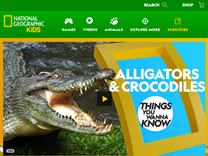Ostrich | National Geographic Kids https://kids.nationalgeographic.com/animals/birds/facts/ostrich
The ostrich is the tallest and the heaviest of all birds. While the huge ostrich is a bird, it does not fly. Instead it runs. One stride can cover up to 16 feet (4.9 meters)—about the length of a mid-size family car! The bird is speedy, too. It can run just over 40 miles (64 kilometers) an hour for a short distance, and can keep up a speed of more than 30 miles (48 kilometers) an hour over longer distances. The ostrich uses its short wings for balance, holding them outstretched when it runs. Strong legs can also be used for self-defense. An ostrich will kick with a force mighty enough to kill a lion. When danger approaches, an ostrich will often lie low to hide, stretching its neck along the ground. Its feather colors blend with the sandy soil where it lives. From far away, it looks like the ostrich has buried its head in the sand. Many people thought that was what ostriches did when they were trying to hide, but that is a myth. Ostriches live near grazing animals such as wildebeest, antelopes, and zebras. The grazers stir up insects and rodents for the ostriches to eat, and the ostriches warn the grazers to dangers such as approaching lions. An ostrich group, called a herd, numbers about 12 individuals. Male ostriches compete for control of a group of several females. A herd has a dominant male and a dominant female. She mates only with him, though he may mate with other females as well. All the egg-laying females, called hens, lay their eggs in the nest of the dominant female. Then that female—whose eggs are positioned in the center of the nest, the most well-protected spot—and her mate take care of all the eggs in that one nest. Each egg can be up to 6 inches (15 centimeters) long and weigh 3 pounds (1.5 kilograms)!
Comeback critters See how animal species in trouble have come back from the brink

